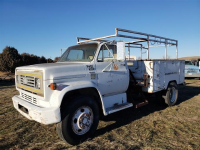Hello all. Perhaps the minds of many can help. My O-320 had a sudden power loss about 2 months ago at altitude... twice! Was returning to my home base at 3500ft, and it was like someone pulled the throttle back to idle (like a practice engine out). Engine did not quit or sputter. Stayed at low idle for about 20-30 seconds (seemed like hours!), and then returned to cruise power on its own. YIKES. Was heading back to my home base anyway, and about 10-15 miles out, it did it again... maybe 15-20 seconds of the same power loss, then returned to cruise RPM. By that time, I was close enough to the airport and made an uneventful landing. Of course, during the panic, I didn't have time to check the abundance of info on my Dynon screens... too busy trying to find a place to land.
Since then, we have removed and repaired the carb (no discrepancies found and bench checked fine), fuel flow was slightly low, so replaced the fuel sender module to the Dynon (now a bit higher), drained all tanks and gascolator (no gunk), replaced fuel pump with new, but did find that both Andair fuel check valves in the wingtips had come undone and were just freely running around (probably had been like that for a while... some of the lines were dry/cracked/brittle). Fuel caps are NOT vented. Fixed the Andair vent lines. I assume a fuel issue/starvation would lead to engine roughness... not a smooth loss of power. Readjusted carb. I've been up for a few rides around the pattern since, with great hesitation. No power losses like that one day, but RPM's vary... sometimes up and down 20-40-50 rpm, intermittently, and can notice the engine noise change. Thinking of replacing the throttle cable next. Someone mentioned the airbox... possibly hose connecting airbox to intake getting squished (in a tight cowl?). Someone else mentioned "air, fuel, electric". I threw out a crummy Brackett air filter and put in a K+N. I do have dual EFII electronic ignitions, and those are working fine... so assume 'electric' has been ruled out. Fuel flow is good (lines drained well... no water), so maybe that's out too. Air?
My mechanics and I are baffled. I do have a throttle friction lock, and it was tight. But I still see these minimal RPM variations. What are we missing?
I am am hesitant to make any trips until this resolves.
Any thoughts/comments/ideas will be most welcomed. Thanks!
Since then, we have removed and repaired the carb (no discrepancies found and bench checked fine), fuel flow was slightly low, so replaced the fuel sender module to the Dynon (now a bit higher), drained all tanks and gascolator (no gunk), replaced fuel pump with new, but did find that both Andair fuel check valves in the wingtips had come undone and were just freely running around (probably had been like that for a while... some of the lines were dry/cracked/brittle). Fuel caps are NOT vented. Fixed the Andair vent lines. I assume a fuel issue/starvation would lead to engine roughness... not a smooth loss of power. Readjusted carb. I've been up for a few rides around the pattern since, with great hesitation. No power losses like that one day, but RPM's vary... sometimes up and down 20-40-50 rpm, intermittently, and can notice the engine noise change. Thinking of replacing the throttle cable next. Someone mentioned the airbox... possibly hose connecting airbox to intake getting squished (in a tight cowl?). Someone else mentioned "air, fuel, electric". I threw out a crummy Brackett air filter and put in a K+N. I do have dual EFII electronic ignitions, and those are working fine... so assume 'electric' has been ruled out. Fuel flow is good (lines drained well... no water), so maybe that's out too. Air?
My mechanics and I are baffled. I do have a throttle friction lock, and it was tight. But I still see these minimal RPM variations. What are we missing?
I am am hesitant to make any trips until this resolves.
Any thoughts/comments/ideas will be most welcomed. Thanks!


